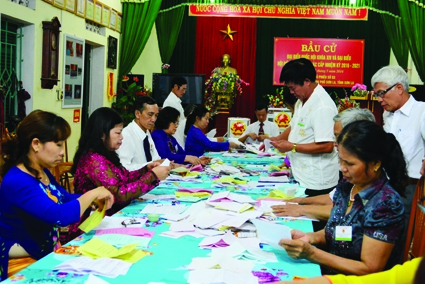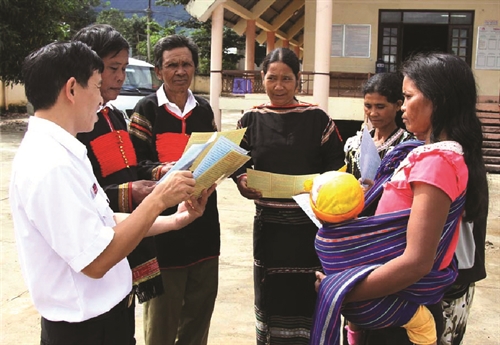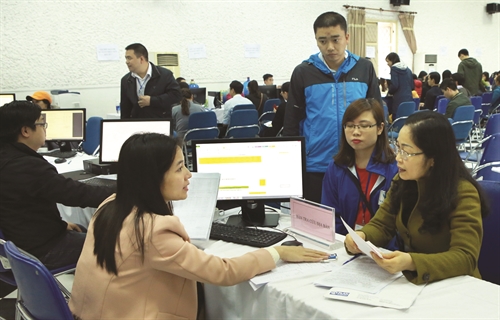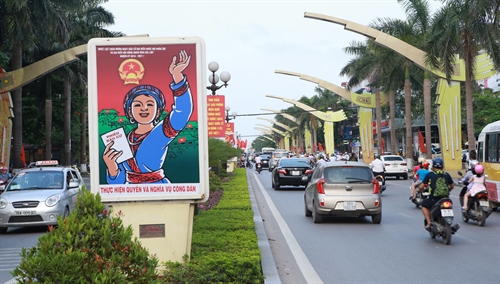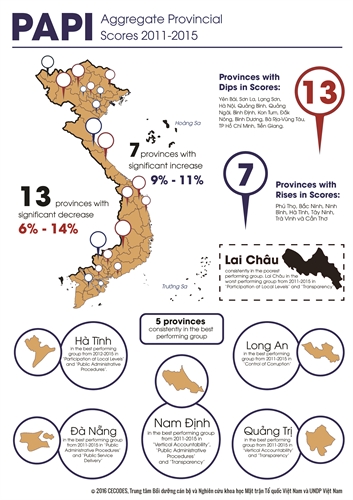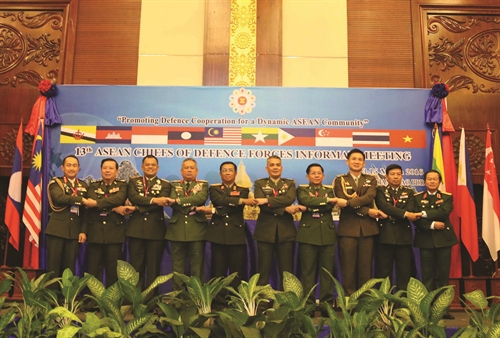Dr. Chu Thi Hoa
Agency for Administrative Violations Handling Management and Law Enforcement Moninoring
Ministry of Justice
The 2010 Law on Food Safety (the Law) has shifted the food safety management based on food production and trading stages to the product group-based management mechanism. This is considered an important policy addressing overlaps in the food safety management among ministries and sectors and at the same time helping define more clearly responsibilities of each ministry or sector in the field. An important part of this policy is the reduction of the number of ministries in charge of food safety from eight (under the 2003 Ordinance on Food Hygiene and Safety) to three, namely the Ministry of Health (MOH), Ministry of Agriculture and Rural Development (MARD) and Ministry of Industry and Trade (MOIT).
Before the effective date of the Law, the food safety management was based on different stages: The MARD manages the production stage, the MOIT manages the circulation stage, while the MOH manages the processing stage.
According to Articles 62, 63 and 64 of the Law, the above ministries have the following food safety management responsibilities:
The MOH manages food safety in all stages of production, processing, preservation, transportation, export, import and trading of food additives, food processing aids, bottled water, natural mineral water, functional foods and other foodstuffs as required by the Government.
The MARD oversees food safety throughout the course of production, collection, slaughter, processing, preservation, transportation, export, import and trading of cereals, meat and meat products; aquatic products; vegetables, tubes and fruits and their products; eggs and egg products; material fresh milk, honey and honey products, genetically modified foods, salt and other farm produce and foodstuffs.
The MOIT manages food safety throughout the course of production, processing, preservation, transportation, export, import and trading of liquor, beer, beverage, processed milk, vegetable oil, products processed from starch and flour, and other foodstuffs as assigned by the Government.
The three ministries are also responsible for overseeing food packaging and containing tools and materials throughout the course of production, processing and trading of food products under their respective management.
The National Steering Committee (Steering Committee 389) on Prevention and Combat of Smuggling, Trade Fraud and Counterfeit Goods (with the Ministry of Finance as the standing body), set up on March 19, 2014, is responsible for food safety related to smuggled and fake goods.
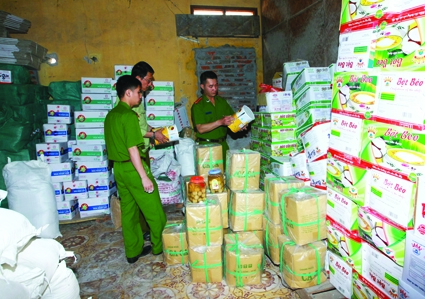 |
| Market management and police officers check allegedly unsafe food seasonings of Hung Thinh Co., Ltd., in Hanoi __Photo: Doan Tan/VNA |
So, at the central level, the food safety management work has been assigned to the three ministries. In the Ministry of Health, the Food Safety Department has been established to assist the ministry in managing food safety. In the Ministry of Industry and Trade, this work is assigned to the Science and Technology Department and Market Management Department. In the Ministry of Agriculture and Rural Development, the management of quality, hygiene and safety of forest, agricultural and aquatic products is assigned to four agencies: the Cultivation Department, the Plant Protection Department, the Department for Management of Agricultural, Forest and Aquatic Product Quality and the Department for Agricultural, Forest and Aquatic Product Processing and Salt Production. These agencies all have functional divisions or centers in charge of food safety management. For example, the Plant Protection Department has a division of food safety management and environment, nine plant quarantine sub-departments, over 80 border-gate plant quarantine stations that quarantine plants and inspect safety of exported and imported food products of plant origin, four regional plant protection centers that forecast and control harmful organisms in crop fields, two centers for inspection and testing of plant protection drugs up to ISO/IEC 17025 standards that inspect plant protection drug quality and analyze plant protection drugs, heavy metals, microorganisms and aflatoxin residues in food.
To date all 63 provinces and centrally run cities across the country have established their Agricultural, Forest and Aquatic Product Quality Management Sub-Departments under Prime Minister Decision No. 809/QD-TTg of May 30, 2011, on building capacity for agricultural, forest and aquatic product quality management for the 2011-2015 period. In addition, the Animal Health, Plant Protection and Fisheries Sub-Departments also participate in the management and inspection of food quality and safety of agricultural, forest and aquatic products as assigned by provincial-level Agriculture and Rural Development Departments. A number of local Agricultural, Forest and Aquatic Product Quality Management Sub-Departments have set up food testing stations or units to inspect and give advice on food quality and safety of agricultural, forest and aquatic products. Specialized food quality and safety inspectorates have commenced operation in most localities under different names and with functions and tasks varying among localities. The Ministry of Agriculture and Rural Development has issued 780 specialized inspector cards to specialized inspectors under Government Decree No. 07/2012/ND-CP dated February 9, 2012, and Circular No. 34/2013/TT-BNNPTNT dated June 24, 2013. In the health sector, Food Safety and Hygiene Sub-Departments affiliated to provincial-level Health Departments have been established in all provinces and centrally run cities.
As reported by provincial-level People’s Committees, districts and communes have arranged officers in charge of food safety issues, although the number of these officers is insufficient compared to the requirements of the work. In rural districts, the food safety management duty is assigned to economic or economic-agricultural divisions, health divisions or health centers. In urban districts or provincial cities without agricultural divisions, this duty is assigned to health divisions or centers.
At commune level, one health officer is assigned to assist the People’s Committee in food safety issues. Commune-level People’s Committees have set up a Food Hygiene and Safety Steering Committee with a People’s Committee deputy chairperson as its head, head of the health station as its deputy heads, and local police, justice, socio-cultural, financial, security and order officers as its members. However, food safety management activities in communes and wards remain ineffective for the reason that officers in charge are all part-timers who can hardly monitor food trading all day and night and lack professional knowledge and skills and equipment for testing food.
Clear determination of responsibilities of related ministries is a very important issue. The 2010 Law on Food Safety has not only clearly assigned responsibilities to the three ministries but also helped form an organizational system for food safety management at all levels, from central to commune levels.
The assignment of responsibilities to the three ministries is specifically guided in Joint Circular No. 13/2014/TTLT/BYT-BNN-BCT dated April 9, 2014. This Joint Circular has stressed an important principle in the management assignment, i.e., a product or a production or trading unit is managed by only one state management agency, aiming to remove overlaps in food safety management. The publicization of lists of products and product groups managed by each ministry also creates favorable conditions for food producers and traders to easily observe food safety regulations.
The food safety management spanning from “farm to table” has drawn a great deal of attention but the food safety situation has not seen much positive change as expected.
In reality there remain some irrationalities in the assignment of state management responsibilities for food safety.
First, a number of commodity lines are still subject to overlapping management without clear identification of which ministry in charge. Bun (rice vermicelli) is an example. The quality of this common food is currently managed by all the three ministries: The MARD is responsible for wet rice flour used as material; the MOIT is responsible for the starch product, and the MOH is responsible for rice vermicelli sold on the market if it contains tinopal, a banned substance in food processing.
Businesses also face difficulties caused by the overlapping food safety management. For example, a business that trades in products under the management of the three ministries will be consecutively inspected by these ministries in a year. Under Joint Circular No. 13 mentioned above, in principle supermarkets will apply for food safety permits at the MOIT. But since they trade in food products, to complete the application procedures they have to go through all three ministries. Another question arises in the application for food safety permits for restaurants located in supermarkets is that it is unclear whether businesses should apply for such permits at the MOIT or the local authority, which is assigned to manage restaurants, or both.
Besides, a food trader that wishes to advertise its products must obtain certifications from the health authorities for the advertising content and from the culture, sports and tourism authorities for advertisement designs and even from the industry and trade authorities for products permitted for sale on the market, which would greatly affect their sale and business results.
Second, while some commodity lines are subject to the management of multiple state agencies, there remain some commodities not managed by any agency, such as leeches which have been recently gathered by Chinese traders.
Third, as mentioned above, within the MARD, MOH and MOIT, many units have been assigned to act as focal points in food safety management with their organizational systems established down to the commune level, in addition to the inspection agencies of the three ministries. However, when a food safety incident occurs, it is hard to identify which unit would bear administrative and material responsibility.-
